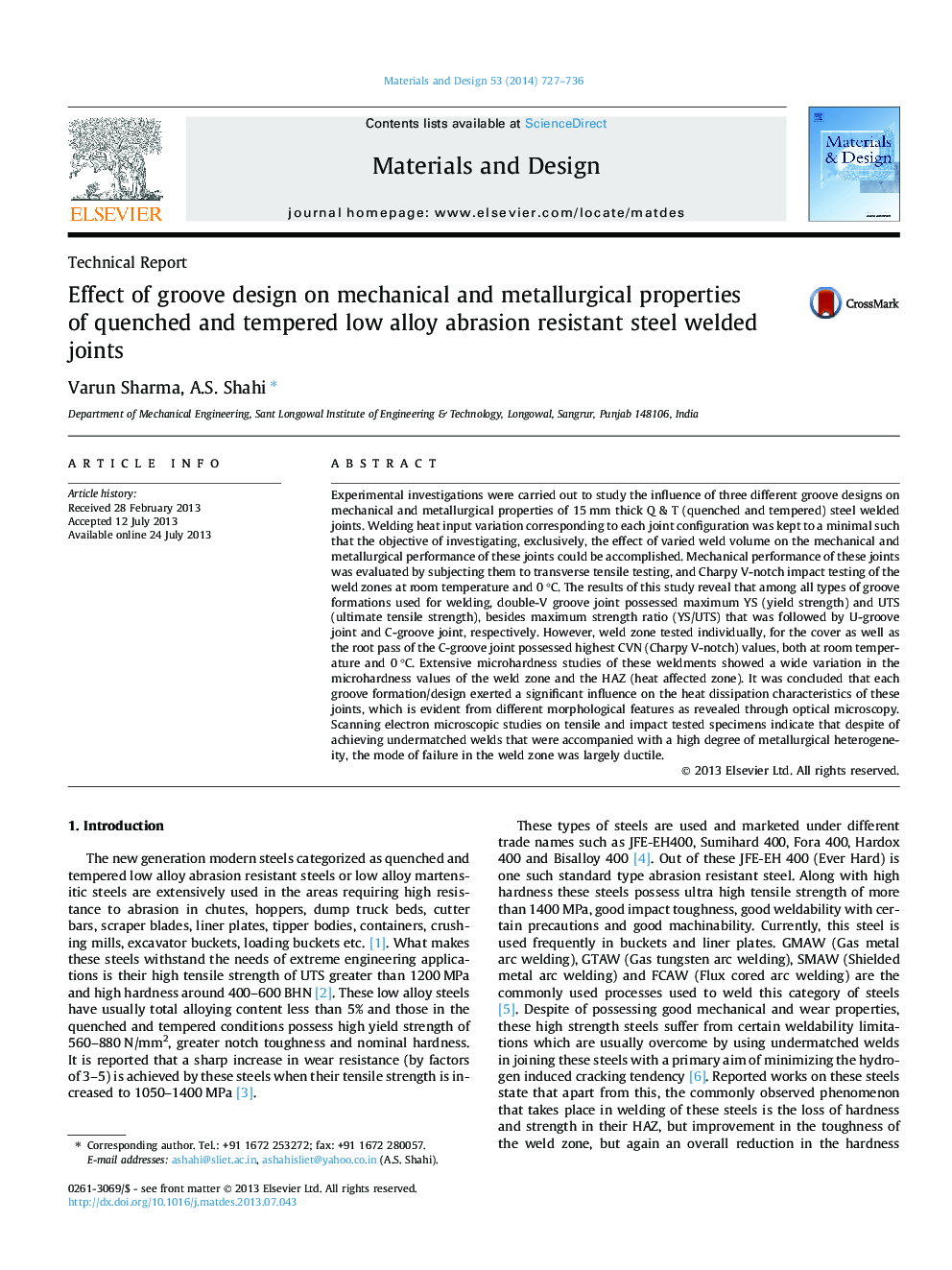| کد مقاله | کد نشریه | سال انتشار | مقاله انگلیسی | نسخه تمام متن |
|---|---|---|---|---|
| 829794 | 1470344 | 2014 | 10 صفحه PDF | دانلود رایگان |
• Effect of weld groove design on Q & T steel welded joints is investigated.
• Groove design influences heat dissipation characteristics of welded joints.
• Double-V groove joint possesses maximum yield strength and UTS.
• C-groove joint possesses highest impact energy, both at room temperature and 0 °C.
• A wide variation in microhardness exists across different zone of the weldments.
Experimental investigations were carried out to study the influence of three different groove designs on mechanical and metallurgical properties of 15 mm thick Q & T (quenched and tempered) steel welded joints. Welding heat input variation corresponding to each joint configuration was kept to a minimal such that the objective of investigating, exclusively, the effect of varied weld volume on the mechanical and metallurgical performance of these joints could be accomplished. Mechanical performance of these joints was evaluated by subjecting them to transverse tensile testing, and Charpy V-notch impact testing of the weld zones at room temperature and 0 °C. The results of this study reveal that among all types of groove formations used for welding, double-V groove joint possessed maximum YS (yield strength) and UTS (ultimate tensile strength), besides maximum strength ratio (YS/UTS) that was followed by U-groove joint and C-groove joint, respectively. However, weld zone tested individually, for the cover as well as the root pass of the C-groove joint possessed highest CVN (Charpy V-notch) values, both at room temperature and 0 °C. Extensive microhardness studies of these weldments showed a wide variation in the microhardness values of the weld zone and the HAZ (heat affected zone). It was concluded that each groove formation/design exerted a significant influence on the heat dissipation characteristics of these joints, which is evident from different morphological features as revealed through optical microscopy. Scanning electron microscopic studies on tensile and impact tested specimens indicate that despite of achieving undermatched welds that were accompanied with a high degree of metallurgical heterogeneity, the mode of failure in the weld zone was largely ductile.
Journal: Materials & Design - Volume 53, January 2014, Pages 727–736
